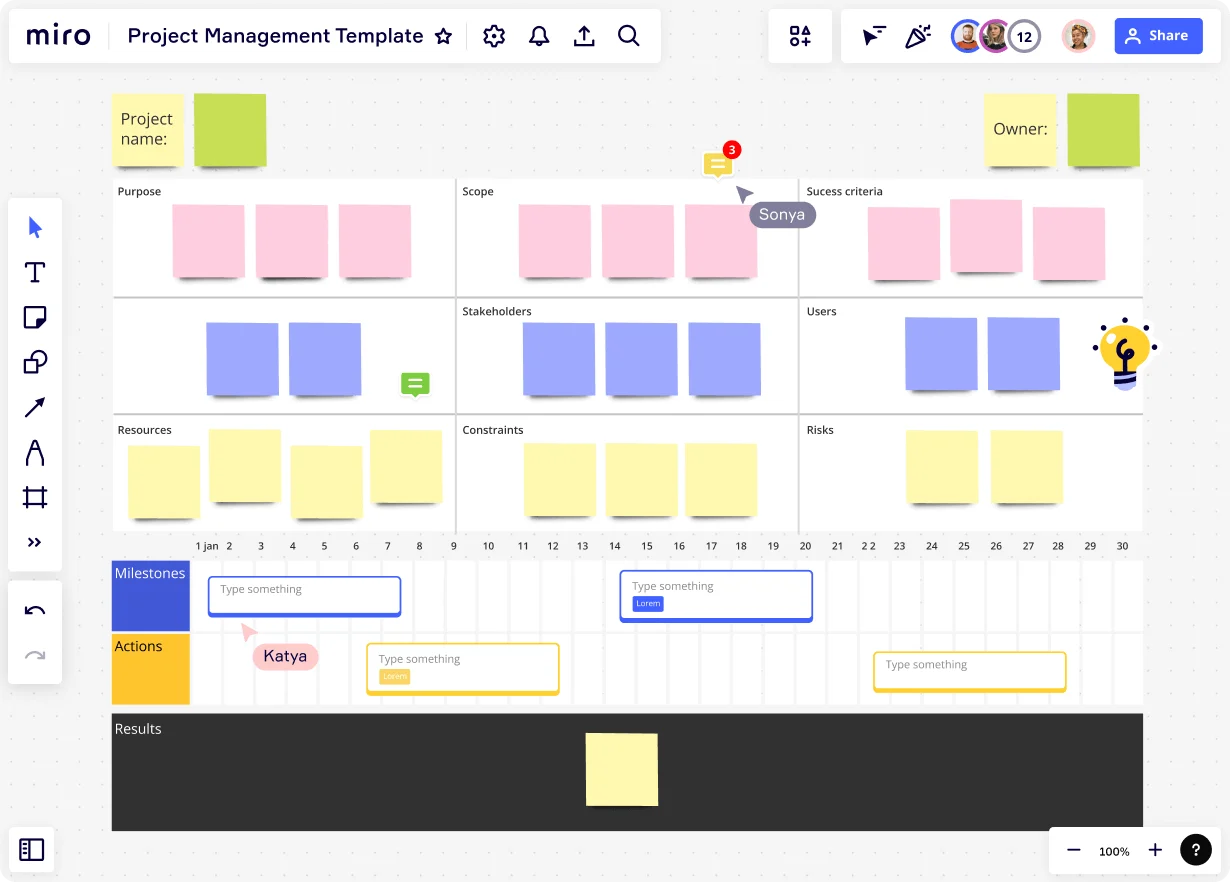
Table of contents
Table of contents
What is scope creep in project management?

Summary
In this guide, you will learn:
What scope creep is: uncontrolled expansion of a project’s scope.
Common causes of scope creep: changing requirements, poor definition, miscommunication, lack of control, unrealistic schedules.
The impact of scope creep: budget overruns, schedule delays, increased risks, project failure.
How to manage and prevent scope creep: use scope statement, WBS, change control, stakeholder communication.
The inevitability of some scope creep and the importance of preparedness.
Best practices for maintaining project control: clear controls, realistic scheduling, project management software.
Try Miro now
Join thousands of teams using Miro to do their best work yet.
Definition of scope creep in project management
Scope creep in project management is when a project's scope grows gradually beyond what was initially planned or approved. This happens when new features, requirements, or tasks are added without proper evaluation or formal approval. Scope creep can cause delays, exceed the budget, and compromise the project's objectives.
Causes of scope creep
Scope creep can be triggered by various factors:
Unclear project requirements: Lack of clarity in defining the project's objectives and deliverables can lead to misunderstandings and open the door to scope creep. Inadequate stakeholder communication: Poor communication with stakeholders may result in their changing expectations and requirements throughout the project, causing scope to expand.
Evolving client expectations: Clients' needs and preferences may evolve during the project, leading to additional requests or modifications that can impact the project scope.
Changes in technology: Advancements in technology can introduce new possibilities or requirements, tempting project teams to add functionalities that were not originally planned.
External market conditions: Shifts in the market landscape can prompt stakeholders to request modifications to the project scope to address new challenges or opportunities. Stakeholder turnover: Changes in key stakeholders or project team members might bring different perspectives and objectives, potentially influencing scope changes. Eagerness to please clients: Project teams may be eager to accommodate every client request without thoroughly evaluating the impact on project feasibility, leading to scope creep.
Examples of scope creep
Scope creep can manifest in numerous ways, such as clients requesting additional features mid-project, project teams accommodating last-minute changes without analyzing their impact, or stakeholders constantly modifying project requirements. For instance, a software development project may encounter scope creep when clients ask for extra functionalities not included in the initial project plan, leading to development delays and budget overruns.
How to avoid project scope creep
Establish a clear scope definition: Define the project's objectives, deliverables, and limitations right from the beginning to provide a solid foundation for project planning. Regularly communicate with stakeholders: Keep stakeholders informed and engaged throughout the project to manage their expectations and involve them in scope evaluation.
Implement a formal change control process: Create a structured process for assessing and approving any scope modifications before incorporating them into the project. Conduct thorough risk assessment: Anticipate potential scope creep triggers by conducting a comprehensive risk assessment and develop proactive strategies to address them.
Monitor project progress: Continuously track project progress and ensure that the project team adheres to the defined scope, avoiding any unauthorized expansions and maintaining project success.
Author: Miro Team
Last update: October 16, 2025